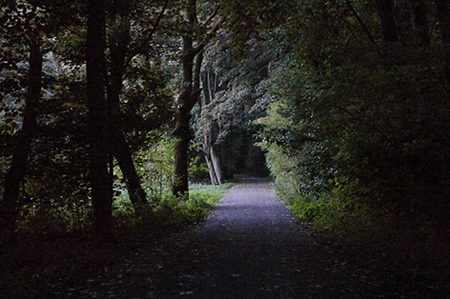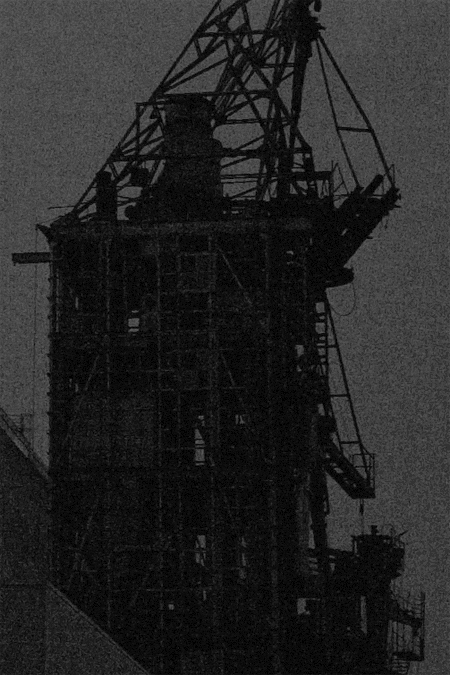User:Nicole Hametner/Trimester4: Difference between revisions
No edit summary |
|||
| (2 intermediate revisions by the same user not shown) | |||
| Line 1: | Line 1: | ||
Nicole Hametner, Trimester 4, december 2013 | |||
=Project proposal= | =Project proposal= | ||
| Line 18: | Line 20: | ||
<tr> | <tr> | ||
<td valign="top"> | <td valign="top"> | ||
* The research I began in [http://pzwart3.wdka.hro.nl/wiki/User:Nicole_Hametner/Trimester2 | * The research I began in [http://pzwart3.wdka.hro.nl/wiki/User:Nicole_Hametner/Trimester2<font color="black">the second trimester</font>] is what I want to deepen for the graduation project. In that trimester my field of interest lay in a comparison of photography and video, from stillness towards the moving image, shifting from analog to digital. The construction of the image itself was looked at in a rather metaphorical way and expressed some philosophical and poetic aspects of its media specificity. In this final year I will investigate technical aspects of the digital moving image during the shooting, the postproduction and the final presentation. I will also reflect on the form of the video installation, the role of the observer and read some theory of cinema.<br> | ||
* In the final presentation the spectator will find herself in a delimited space surrounded by large, hung projection screens. Perception lies at the center of my investigation and this will be challenged by an initially slight disorientation due to the darkness of the room, where the eye has to adapt to the low light condition. The night shots will be projected onto the screens, but instead of being a blinding light the dominant part will be the dark zones of the image. Because of the slight underexposure of the video there will be temporal moving noise created by the flickering of pixels, which provokes a vibration in the shadows. The aim is a composition of different low light areas, resulting in more or less abstract images. <br> | * In the final presentation the spectator will find herself in a delimited space surrounded by large, hung projection screens. Perception lies at the center of my investigation and this will be challenged by an initially slight disorientation due to the darkness of the room, where the eye has to adapt to the low light condition. The night shots will be projected onto the screens, but instead of being a blinding light the dominant part will be the dark zones of the image. Because of the slight underexposure of the video there will be temporal moving noise created by the flickering of pixels, which provokes a vibration in the shadows. The aim is a composition of different low light areas, resulting in more or less abstract images. <br> | ||
* Next to these outside scenes there will be vertical projections of portraits, evoking the theme of the gaze back to the beholder, another line of research that I have started in [http://pzwart3.wdka.hro.nl/wiki/User:Nicole_Hametner/Trimester2 | * Next to these outside scenes there will be vertical projections of portraits, evoking the theme of the gaze back to the beholder, another line of research that I have started in [http://pzwart3.wdka.hro.nl/wiki/User:Nicole_Hametner/Trimester2<font color="black">the second trimester</font>] mentioned above. I was influenced by the topic of the gaze through my research into cinema theory, psychoanalysis and the uncanny. Furthermore, my interest in perception leads to the role of the observer. Her implication while looking at an artwork become important, especially when considering Henri Bergson's idea that the image is an artificial product of mind. The filmed portraits will all be recorded with an additional counter zoom, creating a vertigo effect. The induced changing of perspective provokes a subtle movement. The portraits gaze back at the audience, and the slight deformation of the faces leave the spectator with an uncertainty about who is the one that is shifting. The current tentative title ''Oscillating Shadows'' speaks to the night-shots as well as to the portraits, while referring to the threshold of stillness and barely recognizable movement explored in both pieces. | ||
* The created environment of the multi-screen installation challenges the viewer's perception. The viewer finds herself in a transitory moment; her glance simultaneously seeking orientation through the revealed image, she shifts between a perceived outside and her own inner world. I would like to create a psychological space that is situated between fascination and repulsion. On the one hand, the blackness and vibrations in the dark zones attract like a light, on the other hand, the observer might have an anticipation linked to the idea of disappearance and loss. The feeling of an undefined menace could come up, like in Kafka's universe with its obscure fear of getting lost. My attention is to evoke through the installation an experience situated between a nervous, anxious feeling and pure contemplation. | * The created environment of the multi-screen installation challenges the viewer's perception. The viewer finds herself in a transitory moment; her glance simultaneously seeking orientation through the revealed image, she shifts between a perceived outside and her own inner world. I would like to create a psychological space that is situated between fascination and repulsion. On the one hand, the blackness and vibrations in the dark zones attract like a light, on the other hand, the observer might have an anticipation linked to the idea of disappearance and loss. The feeling of an undefined menace could come up, like in Kafka's universe with its obscure fear of getting lost. My attention is to evoke through the installation an experience situated between a nervous, anxious feeling and pure contemplation. | ||
</td> | </td> | ||
Latest revision as of 12:09, 10 December 2013
Nicole Hametner, Trimester 4, december 2013
Project proposal
Introduction
|
|
Tentative title: Oscillating Shadows
|
|
Relation to previous practice
For a better understanding of how I got to this point, it is useful to look back at the origin of my investigations with photography and its time-based image.
Several interests and points of research have built a background that serves as constant reference that flows into the concrete creation of a new work. For example, my current research on the construction of the image and the behaviour of the medium can be found in previous photographic works, which was once again activated by a curiosity in the digital moving image, which seemed to me to be the counterpart of the stillness in analogue photography. Furthermore, my exploration of the gaze in the portrait works treats, with its subtle movement, the idea of presence and absence that constitutes the whole construction of the time-based image and links to my previous work Black Light, 2010.
The theme of the night always allowed me to talk about the process, the latent image and to reveal the unseen. To sum up, my initial period of research into the theme of disappearance in photography together with the theme of the „nocturne“ from the romantics, links to my current interest in the subject of the limits of perception.
The crucial unique instant while triggering the photograph turned into duration while using long exposures, which I used a lot in my previous works. Now, through thinking about the construction of the digital moving image time again plays an important role and presents the idea that the image as such is never present as a whole (Videophilosophie, Maurizio Lazzarato). This intriguing insight links to the role of the observer, her perception and the question of where the actual image is created, and what it means if it never exists all at once? These reflections increased my curiosity in the origin of the image, which can be understood as the foundation that drives me in my current research. I am heading towards the construction and dissolution of the image, which moves between materiality and pure signal, between duration and instant; searching for the missing link and the space and time in between, at the threshold of abstraction.
Relation to larger context
Using a background in photography, I am exploring the electronic moving image towards the presentation of work in a video installation.
Workplan
The visual research is devided in two parts:
- Recording of the footage (image and sound)
- Tests and observations of the display in a dark room
Until now I have done some small experiments which help me to reflect about the graduation project.
For the next series of test shots, I will record an image sequence using long exposures to create still images, which will then be played back at 24 frames per second. My subjects will be a water surface, static buildings and the human figure. It is an experiment between duration and the instant, between distinct temporal operations and what lies hidden in long exposures through overlaying, condensing, and synthesis. During these test shots I will also investigate the stillness of the model in the portraits, the act of concentration, his or her focus on the recording camera and vice versa.
Thesis proposal
The shift from stillness to the moving image is based on my interest in the threshold as something that is in constant movement, and thereby articulates the theme of presence/absence and disappearance. In addition to this, the juxtaposition of the analog photographic image and the digital moving image evokes the question of indexicality and its materiality. My essay Black Box written in the second trimester explores what is being transformed or "lost" in the analog digital conversion. For the thesis I would like to key into this point and question the construction of the image itself. Is the image dissolved during the process of conversion? And when it is argued that the digital moving image is under constant construction, in constant flow, and therefore never there as a whole, where lies its origin and what or who is then responsible for the finally perceived image?
Bibliography
- Maurizio Lazzarato, Videophilosophy
- Henri Bergson, Matter and Memory
- Laura U. Marks, How Electrons Remember
- Gilles Deleuze, The Movement Image and The Time Image
- Mary Ann Doane, The Emergence of Cinematic Time
- Jonathan Crary, Techniques of the Observer and Suspensions of Perception
- Barbara and Joseph Anderson, The Myth of Persistence of Vision Revisited
- Kaja Silverman, The Threshold of the Visible World
- Between Stillness and Motion, Edited by Eivind Rossaak
- Laura Mulvey, Death 24 Times a Second
- Paul Virilio, L'Art à Pert de Vue
- Tanizaki Junichiro, Praise of Shadows
- TJ Clark, The Sight of Death
- Daniel Arasse, Anachroniques


